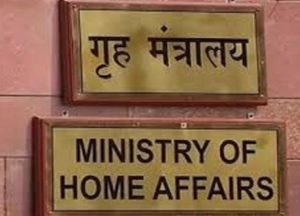Home ministry orders states to enforce emergency powers

New Delhi: The Ministry of Home Affairs Friday instructed the chief secretaries and administrators of all states and Union Territories to invoke the emergency powers provided to them under the Civil Defence Rules. Let’s take a look at what these powers are. India’s civil defence framework grants the Central and State Governments extensive emergency powers to protect civilians and critical infrastructure during times of war, hostile attack, or imminent threat. These powers are codified under the Civil Defence Act, 1968 and its associated rules, and have been actively invoked.
Key Emergency Powers under Civil Defence Rules
- Control Over Property and Premises
- The government can order any person to take measures to make premises less recognisable or more secure in the event of a hostile attack (e.g., camouflage, blackout measures).
- If the person fails to comply, the government may carry out the measures itself and recover the cost from the property owner.
- Regulation of Dangerous Substances
- The government can restrict or regulate the possession, use, or disposal of toxic, explosive, or inflammable substances that may pose special risks during an attack.
- Evacuation and Destruction Orders
- Authorities may order the removal of persons, animals, or property from specified areas, and can direct the destruction or rendering useless of buildings or property if deemed necessary for civil defence.
- Orders can specify routes, timelines, and destinations for evacuation, and make supplementary provisions for effective implementation.
- Restrictions on Movement and Activities
- The government can impose curfews or movement restrictions in specified areas, requiring written permits for being outdoors during certain hours.
- It can also regulate traffic, use of lights and sounds, and other activities that may affect civil defence operations.
- Entry, Inspection, and Enforcement
- Police officers or authorised persons may enter and inspect premises to ensure compliance with civil defence orders (e.g., construction of air raid shelters).
- If individuals fail to comply, the government may take necessary action and recover costs.
- Control of Information and Communication
- The government can prohibit or regulate the printing and publication of materials deemed prejudicial to civil defence, and seize such materials if required.
- Civil Defence Exercises and Drills
- The government can authorise and conduct civil defence exercises, including mock drills, blackouts, air raid simulations, and evacuation training, as seen in Operation Abhyaas across 244 districts in May 2025.
- During such exercises, civil defence personnel may enter any premises or property as needed for training and preparedness.
- Obligations of Local Authorities
- Local authorities may be ordered to take specific protective measures for people and property under their jurisdiction, with compliance prioritised over other duties.
Recent Application: Operation Abhyaas, May 2025
- On 7 May 2025, India conducted its largest-ever civil defence mock drill, simulating air raids, blackouts, and emergency evacuations nationwide, just hours after cross-border military strikes.
- The Ministry of Home Affairs coordinated the exercise, involving mass training, blackout drills, and operationalization of air raid sirens. Public participation and readiness were emphasised, with schools, local authorities, and volunteers actively involved.
These emergency powers are designed to ensure rapid, centralised action to protect life and property during national emergencies. They allow the government to override normal property rights, regulate hazardous materials, enforce evacuations, and control information, all aimed at maximising civilian safety and national resilience in the face of hostile threats.
PNN
News